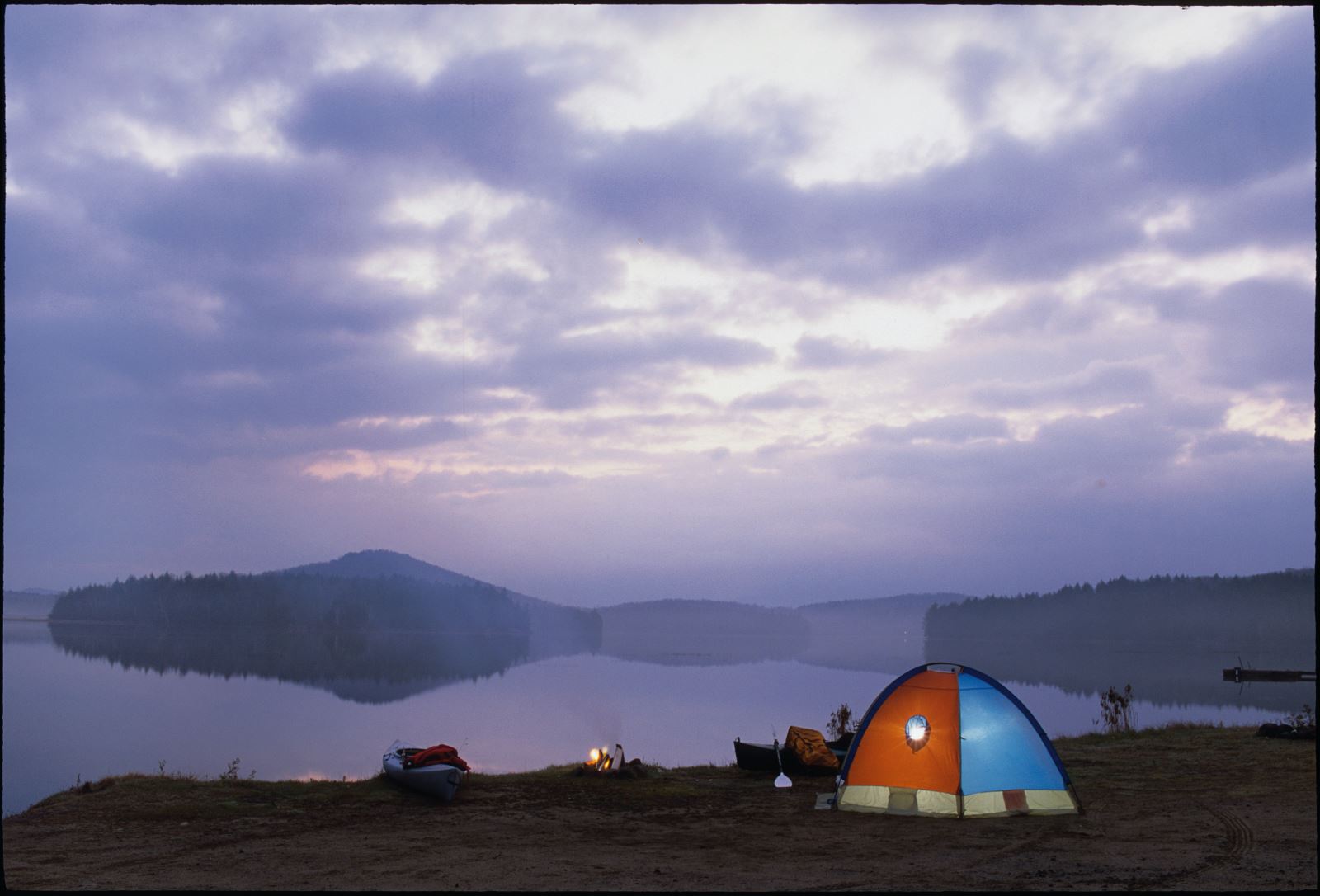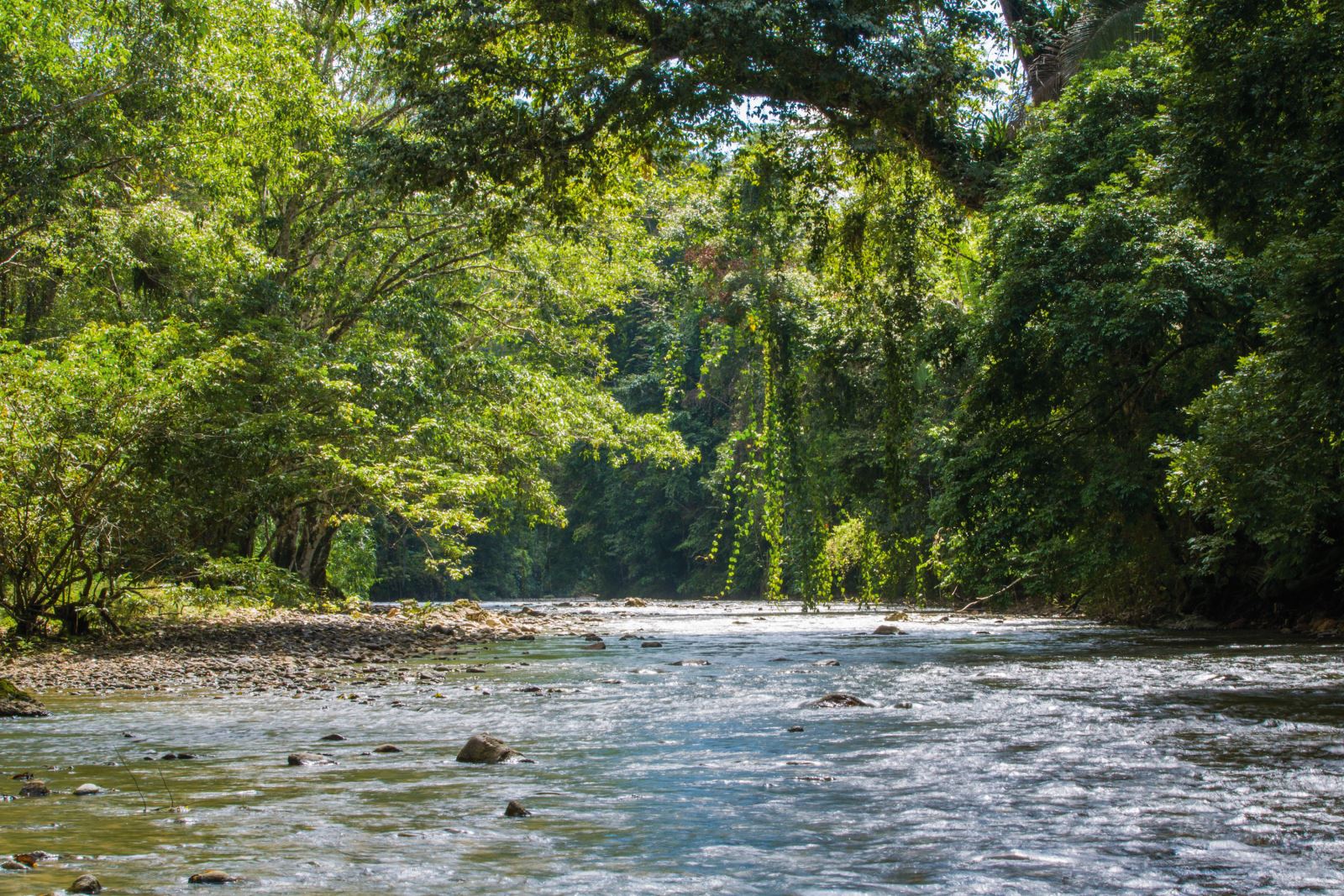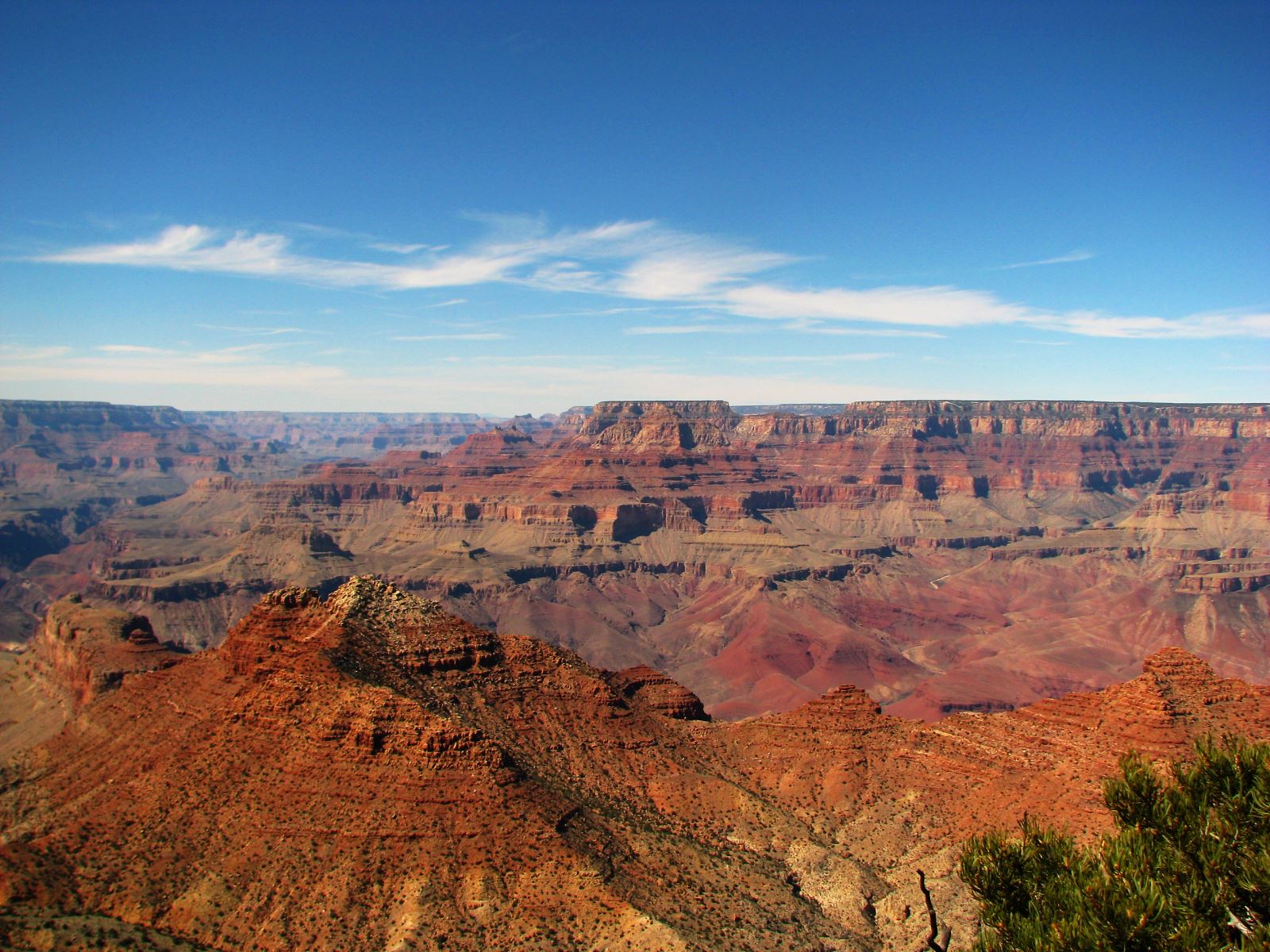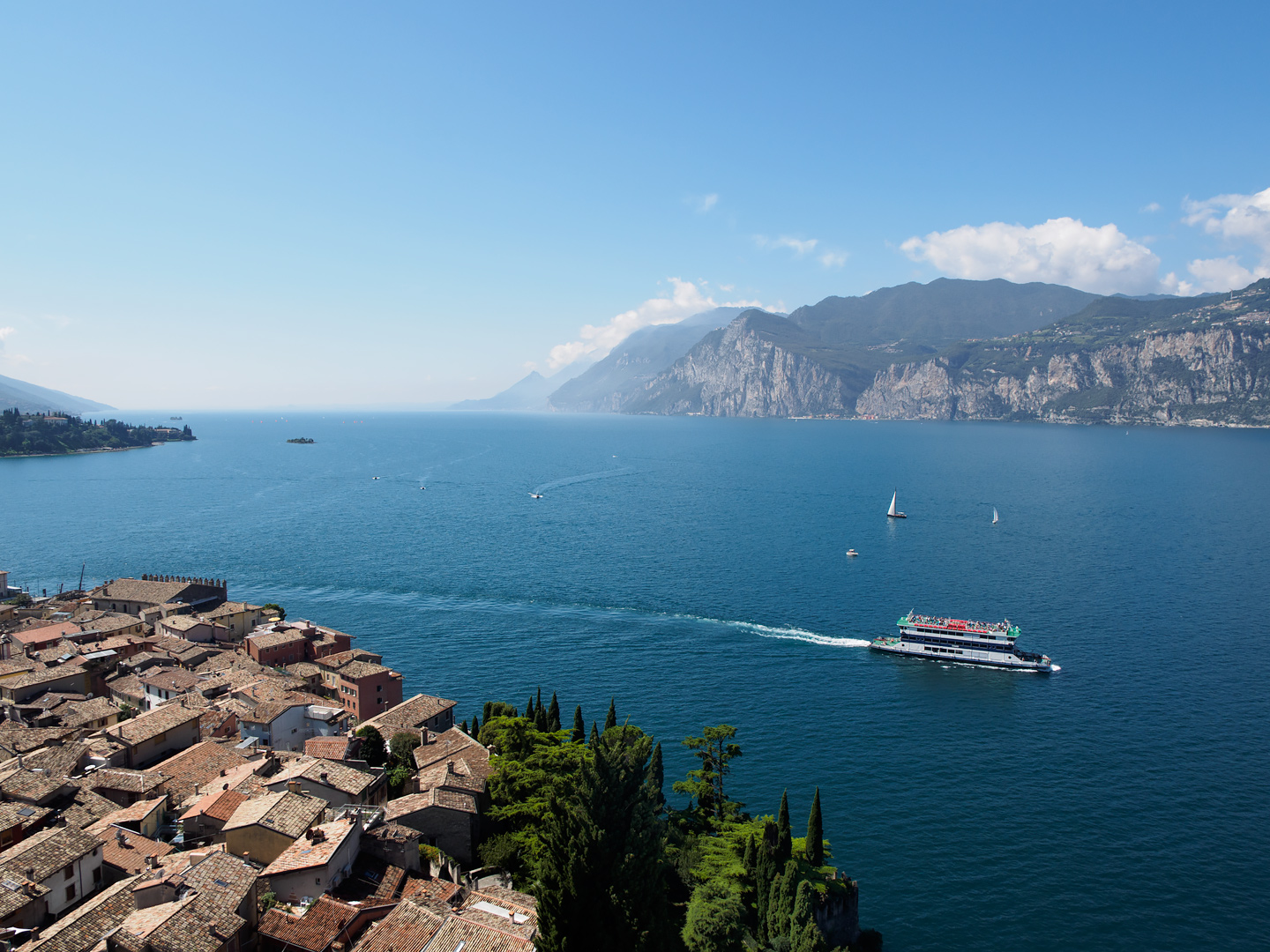7 Places To Camp Before You Die
We all have a dream camping destination – the one special place in the world we’d love to pitch a tent and spend a night.
A book by travel writer Chris Santella offers 50 must-visit camping locations across the globe, and we’ve chosen seven of our favourites in Europe, America and Australasia.
The book features some of the world's top spots for sleeping under the stars and enjoying a host of outdoor recreational activities that make camping such a time-honoured tradition.
Read on and dream on…
1 AUSTRALIA
Booderee National Park, Jervis Bay
In the Dhurga language, “Booderee” means “Bay of Plenty.” For the Aboriginal people who have long called this place home, the “plenty” alluded to the abundant fish available for harvest. For modern-day campers, it speaks to the abundant offerings of the national park—brilliant white sand beaches, intact bush environments, well-provisioned campgrounds, and opportunities to learn about the lifestyle of the people who’ve been here for thousands of years.
“Though it’s just three hours south of Sydney [population 4.5 million], Booderee remains a very natural setting,” John Harvey, visitor service manager at Booderee National Park, says. “There are 30 miles of bushwalking trails of different lengths, depending on what level of challenge you’re seeking. Many begin at the campgrounds. In the centre of the park there’s a botanical garden with freshwater lakes that attract more than 200 bird species. Lastly, the sites in our campgrounds are very private, with vegetation providing a nice buffer between sites. They are close to the beach and have modern facilities.”
Booderee National Park rests in the Jervis Bay Territory of New South Wales, equidistant from the cities of Brisbane and Sydney. The 24 square miles occupied by the park have historically belonged to the Wreck Bay Aboriginal community. In 1995, the park was returned to the Wreck Bay community (which leases the land back to the government) and renamed Booderee.
For most campers travelling to Australia, two experiences are high on the checklist—interacting with the continent’s marsupials and visiting its pristine beaches. Booderee National Park delivers on both counts.
They are very proud of their beaches at Booderee. There are 10 altogether, and they’ve been declared amongst the whitest sand beaches in the world. The water quality on both the Jervis Bay and the ocean sides is exceptional.
Diving and snorkeling are very popular, thanks to water clarity. The ocean side is also popular with surfers. There are three campgrounds at Booderee, all with excellent beach access. Green Patch and Bristol Point rest on the calm inner waters of Jervis Bay, while Cave Beach is on the ocean side of the park.
VISITING
Booderee National Park is three hours from Sydney, which is served by many international carriers.
Best Time to Visit
The austral summer—December through March—sees the warmest weather and is the most popular time to visit. Whale watching is at its peak in June and July.
Campsites
There are three campgrounds in Booderee. Bristol Point and Cave Beach require campers to walk in a brief distance; Green Patch can accommodate caravans/RVs. Amenities include potable water, flush toilets, showers, a sheltered cooking area with gas barbecues, and wood barbecues.
Activities
Swimming, wildlife and botanical-garden viewing, hiking, surfing, fishing, cultural experiences.
2 USA
Julia Pfeiffer Burns State Park, Big Sur, California
“We see many visitors from all over the country, and from overseas too,” ranger Phil Bergman begins. “They often ask where they will find Big Sur, as if it were a specific piece of land. While there is a town of Big Sur, the phrase—“Big South”—refers to the coastline from Carmel in the north to San Simeon in the south. That’s nearly 90 miles of relatively undeveloped land along the centre of the California coast.”
But a few minutes along this rugged coastline make it easy to understand why visitors travel so far to get to Big Sur. Here, the Santa Lucia Mountains rise abruptly by the Pacific and misty valleys shelter forests of giant redwoods, creating some of North America’s most iconic coastal vistas. One can only imagine how deeply real estate moguls have longed to monetize these views; yet the hardy terrain through much of this stretch has made development unfeasible.
Today, the stretch of road running through Big Sur is considered one of the crown jewels of the American National Scenic Byways system. The beauty and isolation of Big Sur has attracted many writers since its discovery, ranging from Robinson Jeffers and Henry Miller to Jack Kerouac and Richard Brautigan. Their musings on the place no doubt further burnished its reputation.
There are a number of campgrounds along the northern section of the Big Sur coast, including the three state parks that Phil helps oversee; beginning in the north, these are Andrew Molera, Pfeiffer Big Sur, and Julia Pfeiffer Burns.
“The campground at Andrew Molera is set in an open field that’s about two-thirds of a mile from the beach,” says Phil. “You have to hike your gear in about one quarter mile to reach one of 24 sites. Though you have to hike in, the campground has decent amenities— fire rings, picnic tables, washrooms, and running, potable water. Since you’re in an open field, the stargazing can be amazing. On nights with a full moon, the coyotes provide a chorus.”
A bit south of Andrew Molera State Park, you’ll reach Pfeiffer Big Sur, which is set back from the sea several miles, amidst thick forests of redwoods, conifers, oaks, and alders. The Big Sur River flows through the campground, and a number of sites are situated right along the river. Pfeiffer Big Sur offers the most camping sites (169) in the northern segment of Big Sur, and the most amenities, including a store, a lodge, and space for RVs.
A few miles south of Pfeiffer Big Sur sits one of California’s most unique state parks, Julia Pfeiffer Burns. Though the park stretches over 3,700 acres, much of it is inaccessible; the hillsides are simply too inhospitable for building trails.
The walk-in campground at Julia Pfeiffer Burns is set high above a beach where McWay Creek plummets some 80ft onto the sand below. The vista of McWay Falls from the north is one of the most photographed scenes in Big Sur. You have the potential to watch whales from outside of your tent, and you can fall asleep to the sound of the waterfall (if the surf isn’t too heavy). The catch is that veryfew people get to enjoy it as there are only two campsites.
VISITING
Several airlines offer service to Monterey, which is 30 miles from Big Sur. These include Alaska Airlines and United. San Jose is 120 miles from Big Sur and is served by most major carriers.
Best Time to Visit
The climate is temperate throughout the year. You’re more likely to find rain in the winter and fog in the summer, though the fog will often clear later in the day. Spring and fall can be pleasantly clear.
Campsites
There are a number of campgrounds along the northern section of Big Sur, including three state parks. These include Andrew Molera (24 walk-in sites, first come, first served); Pfeiffer Big Sur (169 sites, some RV-friendly; reservations through ReserveAmerica: 800-444-7275; www.reserveamerica.com); and Julia Pfeiffer Burns (two walk-in sites, reservations through ReserveAmerica).
Activities
Hiking, wildlife viewing, swimming, fishing, surfing, diving (for experts).
3 USA
Adirondack Park, New York State
Adirondack Park encompasses more than six million acres of north-eastern New York State - much of the area north of a line that would stretch from above the state capital in Albany, west to Utica. (It comprises the largest publicly protected area in the contiguous United States, the equivalent of Yosemite, Yellowstone, Glacier, the Grand Canyon, and the Great Smokies National Parks combined.) The park is a unique pastiche of private lands, state-owned wilderness areas, and more than 100 small towns, replete with forty-two 4,000-plus-foot peaks, 3,000 lakes and ponds, 30,000 miles of white-water rivers and gurgling trout streams, and 2,000 miles of hiking trails and the headwaters of the mighty Hudson.
“There are so many lakes and ponds in the Adirondacks, you can really have some great canoeing adventures,” says Karin Tate, the Sierra Club’s national outings leader
Wherever you are in the area, camping opportunities abound. There are more than 100 campgrounds and thousands of pitches waiting.
VISITING
The closest commercial airports are in Syracuse and Albany, both roughly two and a half hours away. Both are served by most major domestic carriers.
Best Time to Visit
Campgrounds are generally open from mid-May to mid-October. Summer months are the busiest; black flies can be thick in the early season, September can be beautiful.
Campsites
The 52 state campgrounds within Adirondack Park are overseen by the New York State Department of Environmental Conservation (www.dec.ny.gov). Reservations for many of the campsites can be made through ReserveAmerica (www.newyorkstateparks.reserveamerica.com). The many privately operated campsites in the area are listed at Visit Adirondacks (www.visitadirondacks.com).
Activities
Hiking, canoeing, white-water rafting, swimming, fishing, rock climbing, sightseeing.
4 SWEDEN
Norrfallsviken, High Coast
Citizens of Sweden enjoy one of the world’s most generous nationally mandated holiday policies: 20 paid days from their employer and 16 paid national holidays. In the summertime, many Swedes like to enjoy their abundant leisure time camping.
Camping’s popularity dates back to the 1930s, but it really took off around 1970; now there are 1000 sites around Sweden, most of them near the sea or a lake.
One area of Sweden’s 2,000-mile coastline that’s becoming increasingly popular as a camping spot is Höga Kusten, the High Coast, which sits along the nation’s north-eastern edge on the Gulf of Bothnia. The High Coast takes its name from the fact that the land here has risen significantly since the last Ice Age. The landscape is characterized by steep granite cliffs and bright-blue Baltic waters. A favourite camping spot is Norrfällsviken.
Here there are electric hook-ups available, plus cable and satellite TV and Wi-Fi. There’s a restaurant on-site and another in the nearby village; fresh bread can be delivered each morning to your campsite. If your children are along, there’s a petting zoo, regular films, and other hosted activities. End the day with a dip in one of the hot tubs near the marina or relax in the campground’s wood-fired sauna—this is Sweden, after all!
VISITING
Örnsköldsvik Airport is convenient to Norrfällsviken and the High Coast and has regular service from Stockholm via NextJet (+46 771 90 00 90; www.nextjet.se/sv).
Best Time to Visit
The campground at Norrfällsvikens is open May to October, though the best weather arrives in July and August.
Campsites
Norrfällsvikens Camping & Stugby (+46 0613 213 82; www.camping. se) is situated near the heart of the High Coast and has extensive amenities including beach, pool, playground, restaurant, cable and satellite TV, convenience store, sauna, hot tubs, and Wi-Fi. Sites start at 195 Swedish kronor (roughly £17).
Activities
Swimming, boating, hiking, golf, tennis, sightseeing.
5 BELIZE
Belize Foundation For Research and Environmental Education (BFREE)
Sometimes a camping adventure provides a chance to retreat from the demands of your everyday routine to reflect on your life. For Jacob Marlin, a camping trip to the Maya Mountains of southern Belize in 1993 completely changed his life.
It took a few more years, but Jacob eventually found some land and scraped together enough resources to make his dream a reality. Today, people can experience the pristine rain forest of southern Belize at BFREE, a scientific field station that welcomes visitors of all types.
After a six-mile ride up the Bladen Nature Reserve entrance road, eventually you reach the Bladen River; the BFREE compound is on the other side, with the Maya Mountains rising in the distance. You can wade or swim across and grab a canoe and paddle back to pick up your gear. There’s no campground but most campers choose to pitch by the river, an ideal vantage point to spy wildlife heading to the river to drink at dusk.
VISITING
International travellers reach Belize via Belize City, which is served by a number of carriers. Most will take either the Southern Transport or James Bus Line south to the entrance road, or fly to Independence via Maya Island Air and take a taxi to the field station.
Best Time to Visit
February through mid-May provides milder temperatures and drier conditions. November through January is prime time for birding; if you’re interested in reptiles and amphibians, visit in June and July.
Campsite
Belize Foundation for Research and Environmental Education (+501.671.1299; www.bfreebz.org) can accommodate tent campers and also offers basic lodging. Foundation employees are available for interpretive hikes and meals are provided.
Activities
Wildlife viewing, hiking, swimming, canoeing, environmental education.
6 USA
Grand Canyon National Park, Arizona
Neither the deepest nor the widest gorge in the world, the Grand Canyon is nonetheless recognized as one of the planet’s most awe-inspiring erosion events— a 277-mile-long chasm that yawns from 4 to 18 miles and reaches depths of more than a mile, and a seemingly endless series of gentle slopes and abrupt cliffs. “The majority of our visitors have their breath taken away when they see the expanse of Grand Canyon for the first time,” Kirby-Lynn Shedlowski, public affairs officer at Grand Canyon National Park, says.
Staring over the edge of the canyon at Mather Point may be the culmination of a Grand Canyon adventure for many visitors but Kirby-Lynn recommends spending at least two days in the park if possible.
One dilemma campers face at Grand Canyon is: North Rim or South Rim? Kirby-Lynn said: “It depends a bit on when you plan to visit. The South Rim is open year-round with most amenities; the North Rim, which is more than one thousand feet higher in elevation, is fully open from mid- May through October, and generally closed to all visitors through the winter beginning December first. The South Rim has more activities, overall, but also more people.”
The Mather Campground on the South Rim has 300 pitches and can accommodate RVs and tents, with toilets and potable water available; hot showers are available nearby (for a fee). Desert View Campground (also on the South Rim) has 50 pitches but a shorter season. North Rim Campground has 90 pitches The terrain is more alpine in nature here, given the elevation.
VISITING
To reach the North Rim, the nearest airports are Las Vegas and Flagstaff. Flagstaff is served by several carriers, including Alaska Airlines and US Airways. To reach the South Rim, fly to Flagstaff or Phoenix.
Best Time to Visit
During the summer, the interior of the Grand Canyon can reach temperatures of 110 degrees and more... but still, many visitors come. Spring and early fall are wonderful times to visit. (Snow can fly in during late fall and winter on the North Rim.)
Campsites
Mather Campground (in the village on the South Rim) is open year round and accepts reservations in the peak season. Desert View Campground is at the east entrance of the South Rim, 25 miles from the village, and operates on a first come, first-served basis through mid-October. North Rim Campground is open May 15 through October.
Activities
Sightseeing, hiking, interpretive activities, rafting.
7 ITALY
Lake Garda
Lake Garda sits in northern Italy, just west of the town of Verona. It’s Italy’s largest lake, stretching over 30 miles in length and reaching a maximum width of 10 miles and a depth of more than 1000ft. In the north, the lake is encircled by mountains, the southern reach of the Italian Alps; in the south, by hills scoured by receding glaciers. Garda’s waters are exceptionally clear and pleasantly cool, and have attracted holiday seekers from the north and south for many generations; in fact, 7% of all tourists to Italy visit Lake Garda.
There are a number of camping options around Lake Garda. Russell Wheldon, of camping guidebook publisher Alan Rogers, prefers Fornella Camping. “Fornella is one of the few campsites on Lake Garda still surrounded by olive plantations,” he says. “It’s still retained a true country atmosphere. Many sites look out over the lake. Those that don’t have fine views of the surrounding hills and the orchards. The lake is of course a main attraction, and Fornella has excellent facilities for water-sports enthusiasts, whether you’re a boater or a windsurfer.”
There are a host of different accommodation options at Fornella. Simple cabins (with all the amenities of home) are available in two- and three-bedroom configurations, both on the lake and set back in the olive orchards. “Safari tents” (which resemble yurts) also provide a more glamping-oriented experience. There are also more than 250 pitches for tents. If you don’t feel like cooking, there’s both a full-service restaurant and a pizzeria. There are a number of pool options available around the campground and two beaches—the “morning beach” (which faces the southeast) and the “evening beach” (which faces the southwest and has the advantage of proximity to the bar).
Many visitors to Lake Garda will take to the water. It is an attractive sailing venue, with the Pelér blowing reliably from north to south in the morning and the Ora coming up in the afternoon and blowing south to north. Windsurfing—and increasingly, kiteboarding—are also popular, especially on the northern side of the lake.
Whether you sail, windsurf, or take an excursion boat, you’ll want to voyage to Isola del Garda, an island in the southwestern section of Lake Garda (not far from Fornella Camping) that’s rich in both beauty and history. Guided tours are offered from April to October. One stylish option for touring Isola Del Garda is via Siora Veronica, a two-masted gaff schooner that once served as a barge for residents before roads were constructed along the lake’s perimeter.
VISITING
Visitors can fly into Verona, and it is roughly an hour’s drive from the airport to Fornella Camping.
Best Time to Visit
The camping season around Lake Garda runs from mid-April to mid-October. Summertime can be hot, but the lake remains refreshingly cool.
Campsites
Fornella Camping comes highly recommended. Booking is available through Alan Rogers (+44 1580 214 000; www.alanrogers. com).
Activities
Swimming, boating, fishing, biking, hiking, and cultural sightseeing.
LIKE WHAT YOU SEE? BUY THE BOOK FOR MORE FANTASY CAMPING DESTINATIONS

Fifty Places to Camp Before You Die by Chris Santella
Published by Stewart, Tabori & Chang (£15.99)














Recent Updates
Camping barbecue: our guide to cooking up a storm this summer
Is there anything more British than sausages grilled on an open flame and dropped on wet grass? Camping and barbecues go hand in hand, which is why ...
Our family camping checklist: everything you need to pack
Sure, you’ve packed the tent and the sleeping bags – but what about slip-on shoes and glow sticks? These are ...
Our guide to planning the perfect camping road trip
Roll down the window, pop on those shades and crank up the volume – it’s time for a road trip. Get ready for ...
Camping in Europe: our 12 top tips
If you’ve not camped in Europe before, there’s a few tips and tricks you’ll need to avoid some continental ...
Solar power for camping: all you need to know
Staying connected in the great outdoors is easier than ever with a solar charger – or is it? How reliable are ...
Wild camping kit list: everything you need for your next adventure
Make sure you’re ready for anything with this list of lightweight camping gear and clothing, including ...
Camping furniture: all you need to know to make your tent a cosy haven
We delve into the essentials of camping chairs, camping tables, and kitchen and bedroom furniture, ensuring ...
Camping lights for tents: What you need to know
We will guide you through all the lighting options available for you and your tent, including interior ...
Camping kitchen: all you need to know
In the great outdoors, a well-equipped camping kitchen transforms mealtime into a delightful adventure ...
How to pack away your camping gear for winter
A complete guide to packing and storing your gear at the end of the season ...
Other Articles
Camping guide to trailers
Trailer stash or trailer trash? Being able to carry lots of other gear when you go camping isn’t such a bad idea, is it? Nick Harding looks at the ...
Winter camping: all you need to know to keep warm
Winter doesn’t have to mean the end of the camping season. With good preparation and the right gear, there’s ...
Camping toilets: a complete guide
If you are wild camping, camping off-grid or the campsite you book onto doesn’t have toilet facilities, you ...
Top tips for camping in windy weather
How to make sure your tent stands up to gusty conditions ...
Camping tents: a complete guide
If you're considering buying a camping tent, whether it's your first time or you're a seasoned camper, making ...
Camping sleeping bags and beds: a complete guide
When it comes to camping, there's one essential item that can make or break your outdoor adventure: the ...
Camping gas: how to use gas on the campsite
A complete guide to using camping gas appliances safely on the campsite, from choosing the right stove to ...
Camping storage: a complete guide
Having problems knowing where to put all your gear when you're camping? Read our top tips and see some great ...
Camping electric hook-up: a complete guide
This is everything you need to know about using electricity on a campsite, including how to hook up ...
How to pack all your camping gear into your car
Planning a family camping holiday? Find out the best way to fit all the kit you need into your car boot, roof ...